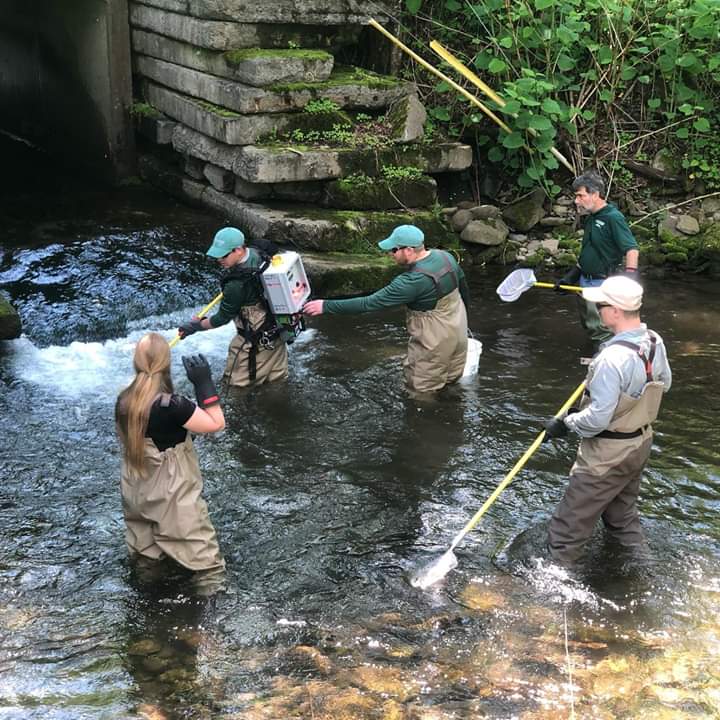Trout Unlimited staff and Ashokan-Pepacton chapter members assisted NYS Department of Environmental Conservation in completing the East Branch Delaware River Trout Habitat Improvement Project (HIP). The project underway since 2016, was designed to better understand potential challenges facing trout in the watershed and to help develop mitigation and management strategies to reduce potential water quality and movement impacts caused by the Lake Wawaka dam in Halcottsville, NY.
The project, spearheaded by concerned local TU members, included studying water temperatures, initiating strategic riparian plantings, tracking fish to better understand their movements within the system, reviewing road-stream crossings to assess their impacts on habitat and fish movement, and to engage the community in environmental service projects.
Stream temperature data were collected from 2016 through 2020 using HOBO Water Temperature Pro v2 Data Loggers. Among other things, the information collected confirmed that the Wawaka Lake impoundment on the system is increasing temperatures downstream from the dam. The data, available HERE, will help the team prioritize sites for future restoration work, including riparian plantings that could help shade sections of the stream below the dam.
In partnership with the Catskill Streams Buffer Initiative and the Arbor Day Foundation, the project team has already completed six separate planting events at priority locations downstream of the dam. The workdays drew 127 volunteers who planted 1,416 native shrubs and trees to create a 6.63-acre buffer along the stream.
The fish-movement study consisted of installing stream-wide radio frequency identification (RFID) units at eight locations in the mainstem East Branch Delaware River and four major tributaries above and below Wawaka Lake.
During the 2018 and 2019 field seasons, tags were implanted in 1,646 trout, including both brown and brook trout. Among the findings, researchers noted that most movement was downstream of the dam during the summer months as trout moved from the mainstem into cooler tributaries.
In addition to the impacts caused by the Lake Wawaka dam, the project team were interested in better understanding the extent of habitat fragmentation and included a culvert survey as part of the project. Of 110 road-stream crossings surveyed, 40 are potential barriers to trout and four of those barriers are flagged as being in poor condition.
According to Caroline Shafer, TU’s field technician in NY, “The survey results will help inform decisions about future projects to replace or improve those sites, which will not only allow better fish passage but can also make the crossings more resilient to flood damage.”
Steve Swenson, NYS DEC Senior Ecologist and a lead researcher on the project agrees that, “The data collected as part of the project will allow for more strategic and targeted restoration work in the watershed.”
Funding for the East Branch HIP was provided by NYC Environmental Protection through the Delaware County East Branch Stream Management Improvement Program administered by Delaware County Soil and Water Conservation District.



